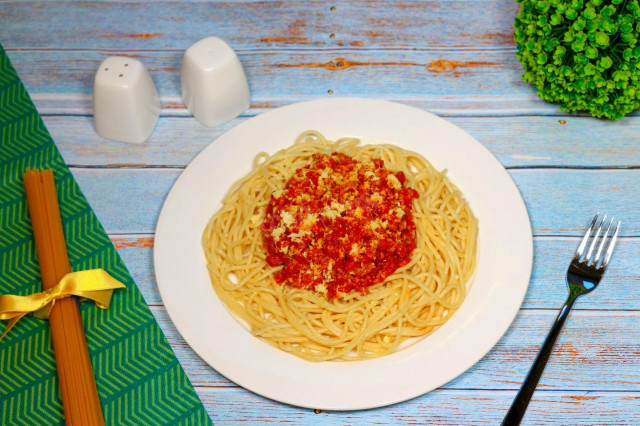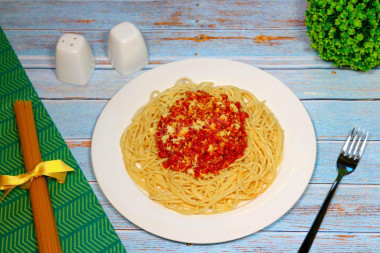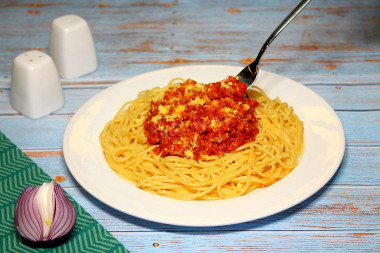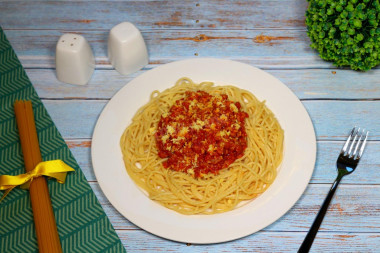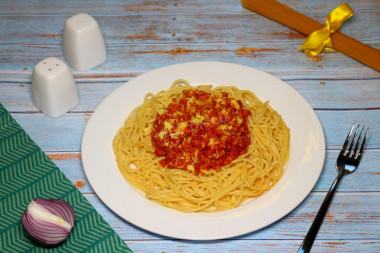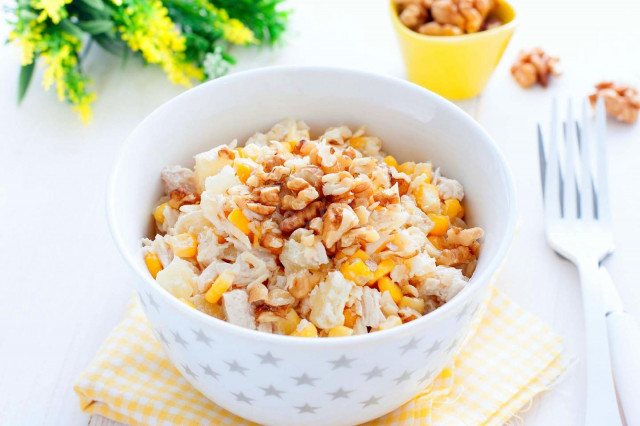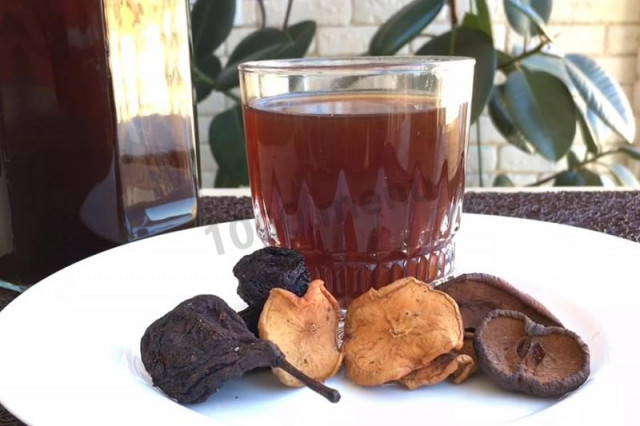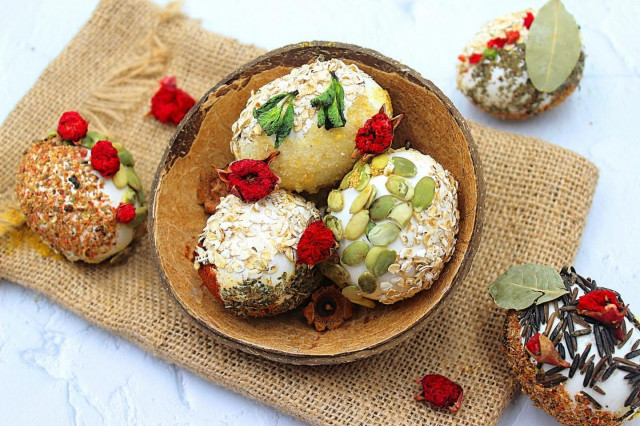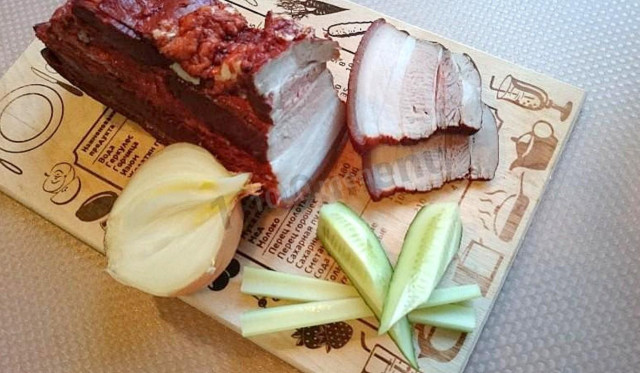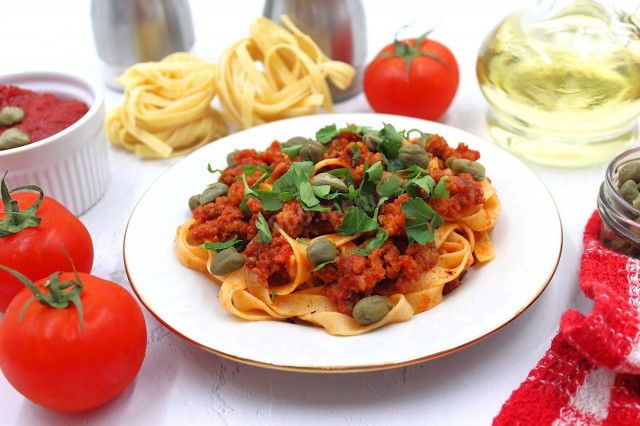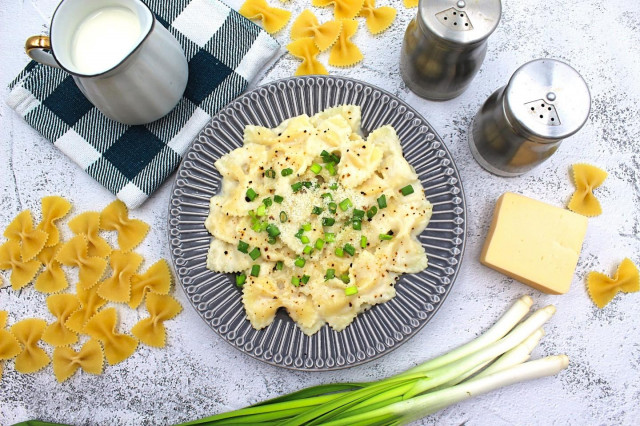Composition / ingredients
Step-by-step cooking
Step 1:
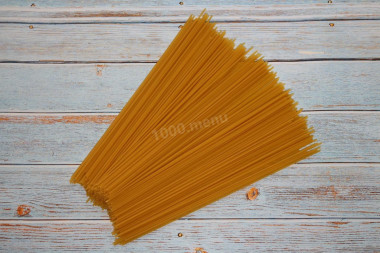
Take a large deep saucepan (so that it is convenient to cook spaghetti in it), pour water into it, put it on fire, bring it to a boil, add salt, then put pasta in boiling water and boil them until ready according to the instructions indicated on the package. Depending on the thickness of the spaghetti itself, the cooking time may vary, so I do not specify it.
Step 2:
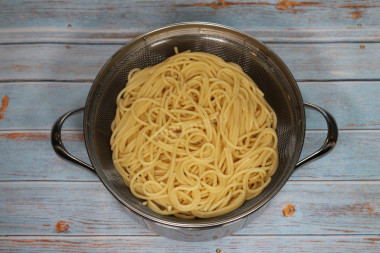
We throw the finished spaghetti into a colander, draining the water. Then put the spaghetti in a saucepan, put a piece of butter, mix.
Step 3:
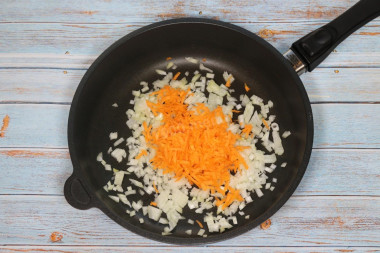
Cut onions into small cubes, three carrots on a coarse grater. Pour a small amount of vegetable oil into the pan, put the pan on fire. As soon as the oil is warmed up, add the already prepared onions and carrots. Fry the vegetables over medium heat, stirring them constantly, bring them to a state of softness.
Step 4:
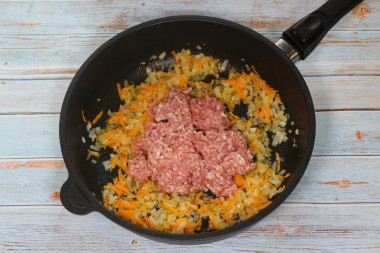
Now add minced meat to the pan with the vegetables. It is best to cook minced meat at home, and not use a purchased one. You can use any minced meat: beef, pork, pork-beef, turkey and even chicken. I used pork. We continue to fry the ingredients, stirring them periodically until the color changes. Then add spices, namely, salt, ground black pepper and paprika. Then add a little flour. Mix everything thoroughly and add tomato paste.
Step 5:
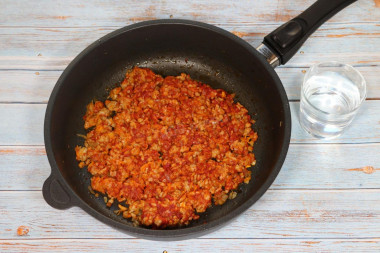
After mixing the minced meat with vegetables and spices again, pour in hot water. Once again, mix everything well and simmer the contents of the pan for 5-7 minutes on low heat. If necessary, add a little more salt, as well as garlic and sugar crushed with a garlic grinder, mix and simmer the sauce for another 5 minutes.
Step 6:
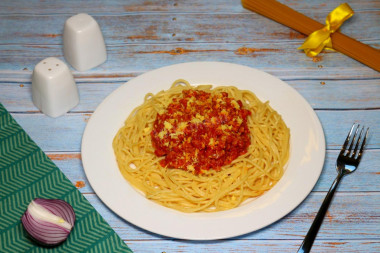
Add a little cheese to the crumbs on the grater. Now that everything is ready, we put the previously boiled spaghetti on plates, spread tomato sauce with minced meat on top and sprinkle it all with grated cheese.
Caloric content of the products possible in the composition of the dish
- Carrots - 33 kcal/100g
- Dried carrots - 275 kcal/100g
- Boiled carrots - 25 kcal/100g
- Dutch cheese - 352 kcal/100g
- Swiss cheese - 335 kcal/100g
- Russian cheese - 366 kcal/100g
- Kostroma cheese - 345 kcal/100g
- Yaroslavsky cheese - 361 kcal/100g
- Altai cheese 50% fat content - 356 kcal/100g
- Soviet cheese - 400 kcal/100g
- Cheese "steppe" - 362 kcal/100g
- Uglich cheese - 347 kcal/100g
- Poshekhonsky cheese - 350 kcal/100g
- Lambert cheese - 377 kcal/100g
- Appnzeller cheese with 50% fat content - 400 kcal/100g
- Chester cheese with 50% fat content - 363 kcal/100g
- Edamer cheese with 40% fat content - 340 kcal/100g
- Cheese with mushrooms of 50% fat content - 395 kcal/100g
- Emmental cheese with 45% fat content - 420 kcal/100g
- Gouda cheese with 45% fat content - 356 kcal/100g
- Aiadeus cheese - 364 kcal/100g
- Dom blanc cheese (semi-hard) - 360 kcal/100g
- Lo spalmino cheese - 61 kcal/100g
- Cheese "etorki" (sheep, hard) - 401 kcal/100g
- White cheese - 100 kcal/100g
- Fat yellow cheese - 260 kcal/100g
- Altai cheese - 355 kcal/100g
- Kaunas cheese - 355 kcal/100g
- Latvian cheese - 316 kcal/100g
- Limburger cheese - 327 kcal/100g
- Lithuanian cheese - 250 kcal/100g
- Lake cheese - 350 kcal/100g
- Gruyere cheese - 396 kcal/100g
- Garlic - 143 kcal/100g
- Ground black pepper - 255 kcal/100g
- Whole durum wheat flour fortified - 333 kcal/100g
- Whole durum wheat flour, universal - 364 kcal/100g
- Flour krupchatka - 348 kcal/100g
- Flour - 325 kcal/100g
- Granulated sugar - 398 kcal/100g
- Sugar - 398 kcal/100g
- Butter 82% - 734 kcal/100g
- Amateur unsalted butter - 709 kcal/100g
- Unsalted peasant butter - 661 kcal/100g
- Peasant salted butter - 652 kcal/100g
- Melted butter - 869 kcal/100g
- Mixed minced meat - 351 kcal/100g
- Vegetable oil - 873 kcal/100g
- Tomato paste - 28 kcal/100g
- Salt - 0 kcal/100g
- Water - 0 kcal/100g
- Onion - 41 kcal/100g
- Paprika - 289 kcal/100g
- Spaghetti - 338 kcal/100g

